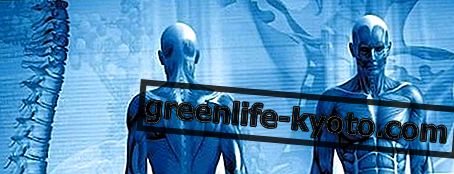
Menopause is a phase of very delicate female life, which some women live with concern. It is a clear passage, a sort of demarcation line that sanctions the term of fertile age, from a biological point of view.
Unfortunately, this change is not always painless, both at the chemical and physical and also at the psychological level. First of all, the hormonal fall with the progressive reduction of estrogen leads to menstrual irregularity up to amenorrhea, sudden hot flashes with copious sweating, dehydration (of the skin and mucous membranes), headache, fatigue .
In these unbalanced conditions women are often subject to mood swings, and unfortunately depression can also arise.
Foot reflexology can accompany this change in a soft way, significantly reducing the disorders that occur at the dawn of menopause.
Try also herbal remedies for menopausal disorders
Reflexology and endocrine system
The hormonal jolt is the alarm bell that signals the need to investigate if we are at the beginning of menopause.
The endocrine glands involved are the pituitary gland, the thyroid, the ovaries .
- The pituitary gland supervises the functioning of the endocrine glands: it is found in the head, in the sphenoid to be exact. His correspondence in plantar reflexology is at the center of the pad of both toes . It is a very small and deep point that must be treated with a pulsating pressure to be stimulated.
- The Thyroid is under the direct control of the pituitary and is located at the base of the neck. It is responsible for regulating the basal metabolism. Its reflex zone is located on the pad beneath the big toes, with a medial to lateral development up to the space between the first and second toes . It must be treated very carefully and not for long periods, because its functionality can be changed.
- The Ovaries are the glands directly affected by the changes induced by menopause. The corresponding reflex zone is located in the external lateral region, below the malleolus . Stimulation takes place with a pressure movement located on the point.
The stimulation of these three areas works on the hormonal release and acts on the menstrual flow, on migraine problems and anxiety states .
Reflexology and urinary tract
Hot flushes, uncontrolled sweats, lymphatic slowdowns, fatigue and stress are related symptoms, which can be considered with the treatment of kidneys, adrenals and bladder .
- Bladder is the viscera from which we start to treat the urinary tract. Its reflected correspondence is located under the inner malleolus, in the medial area.
- The ureter: from the bladder area it runs diagonally towards the center of the foot where the renal area is located.
- The kidney finds its reflected area in the dimple formed by the two bearings in the high plantar area. The stress occurs by pulsating pressure, in order to energize and strengthen the organ and its functions.
- The Adrenals are located on the kidney reflex area . They are stimulated with a deep and pulsating pressure.
All of these are, of course, general indications, since the plantar reflexology starts first from a global analysis of the condition of the woman to adapt the treatment in a personalized manner, so as to facilitate its correct acceptance with awareness.












